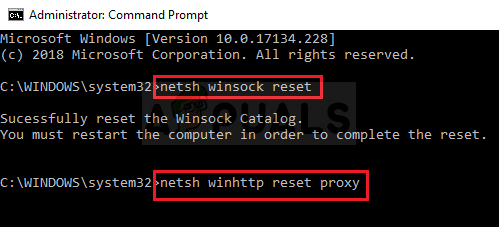How to Fix the ‘netsh int ip reset’ Failed Problem on Windows?
The “netsh int ip reset” command is one of the most useful methods when it comes to network troubleshooting and it’s often used to resolve a larger issue. It rewrites two registry keys used by TCP/IP and it has the same effect as reinstalling the protocol. However, many users have reported that the command simply fails to run along with the “Access is denied” error message.
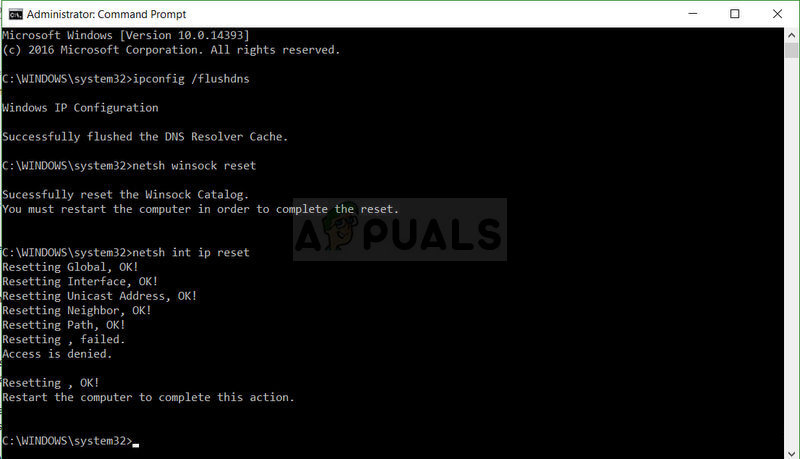
Resolving bigger problems is even more difficult when these commands fail to run. Luckily, there have been several different methods you can use to resolve this problem and we have decided to gather them in a single article. Check it out below and good luck!
What Causes the “netsh int ip reset” Failed Problem on Windows?
We have created a shortlist of different causes of the “netsh int ip reset” failed error on Windows and you should check it out before proceeding with the troubleshooting steps. Knowing the cause of the problem can guide you towards the final solution more quickly!
- Lacking permissions for the ‘netsh.exe’ file – The problem often appears if you lack the permissions to access the executable file used to run the command. You can resolve the problem by taking ownership of its key in the Registry Editor.
- Antivirus tools you have installed – Even though antivirus tools shouldn’t interfere with Windows services and programs, certain antivirus tools such as Avast have prevented users from running the command so we suggest you start using a different antivirus or try disabling it while running the command.
- Miscellaneous networking issues – There are quite a few things which can go wrong with your network but, luckily, there are useful commands you can use to resolve these problems.
Solution 1: Provide Sufficient Permissions for the ‘netsh.exe’ File
The problem often appears if you don’t possess sufficient permissions to access the ‘netsh.exe’ file which is used to launch the command. This can be resolved rather easily by providing permissions for everyone using the Registry Editor. Make sure you follow the instructions carefully and this method should resolve this problem as it did for almost everyone who tried it out!
- Since you are going to edit a registry key, we recommend you check out this article we have published for you to safely backup your registry to prevent other problems. Still, nothing wrong will occur if you follow the steps carefully and correctly.
- Open the Registry Editor window by typing “regedit” in the search bar, the Start menu, or the Run dialog box which can be accessed with the Windows Key + R key combination. Navigate to the following key in your registry by navigating at the left pane:
HKEY_LOCAL_MACHINE\SYSTEM\CurrentControlSet\Control\Nsi\{eb004a00-9b1a-11d4-9123-0050047759bc}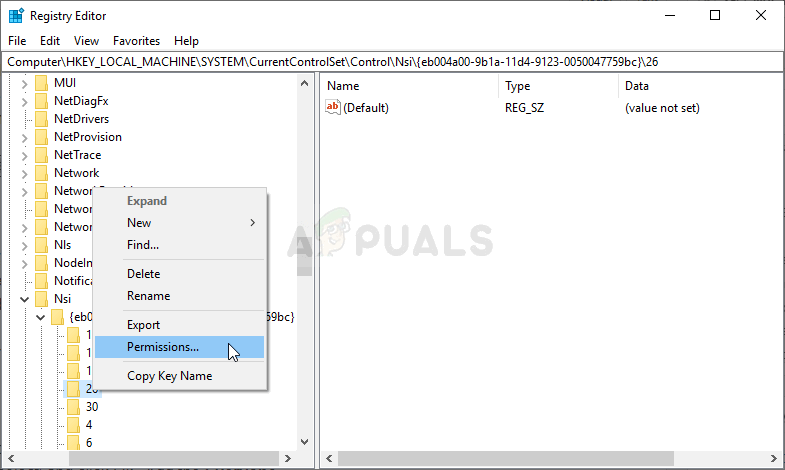
- Expand the last key, locate a folder named simply 26, right-click on it, and choose the Permissions option from the context menu which will appear.
- Click the Advanced The “Advanced Security Settings” window will appear. Here you need to change the Owner of the key.
- Click the Change link next to the “Owner:” label The Select User or Group window will appear.
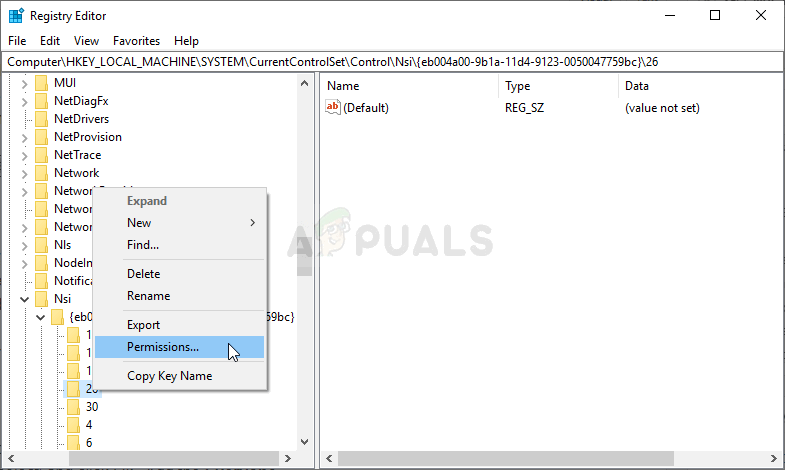
- Select the user account via the Advanced button or just type your user account in the area which says ‘Enter the object name to select’ and click OK. Add the Everyone
- Optionally, to change the owner of all subfolders and files inside the folder, select the checkbox “Replace owner on subcontainers and objects” in the “Advanced Security Settings” window.
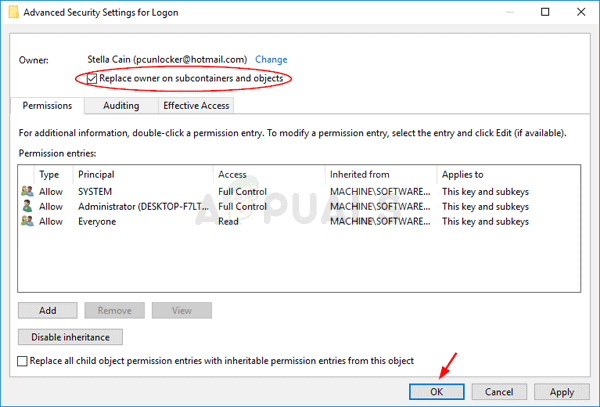
- Click the Add button below and follow it up by clicking the Select a principal button at the top. Select the user account via the Advanced button or just type your user account in the area which says ‘Enter the object name to select‘ and click OK. Add the Everyone
- Under the Basic permissions section, make sure you choose Full control before applying the changes you have made.
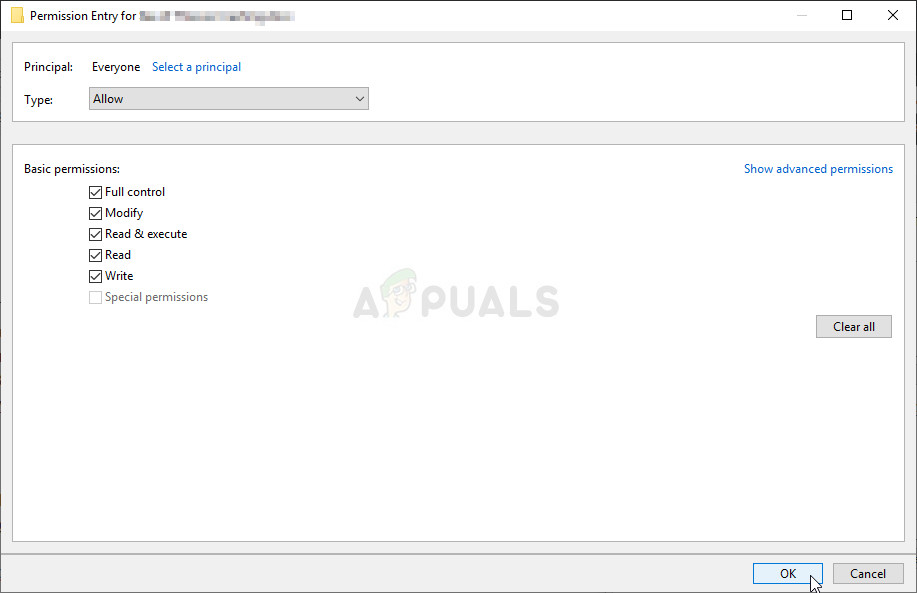
- Restart the computer and check to see if the “Resetting failed. Access is denied” error message appears after running the “netsh int ip reset” command!
Solution 2: Replace the Antivirus Tool You Are Using
Even though antivirus tools shouldn’t affect built-in Windows services and commands which are harmless and helpful, certain free security tools have displayed incompatibility with uninterrupted networking and we recommend you uninstall them. Follow the steps below to uninstall your current antivirus tool!
- Click on the Start menu and open Control Panel by searching for it. Alternatively, you can click on the gear icon to open settings if you are using Windows 10.
- In Control Panel, select to View as – Category at the top right corner and click on Uninstall a Program under the Programs section.
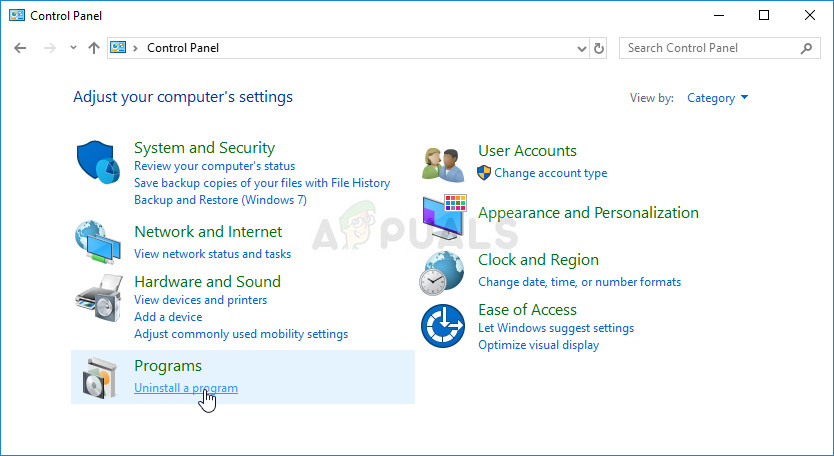
- If you are using the Settings app, clicking on Apps should immediately open a list of all installed programs on your PC.
- Locate your antivirus tool in Control Panel or Settings and click on Uninstall.
- Its uninstall wizard should open so follow the instructions to uninstall it.
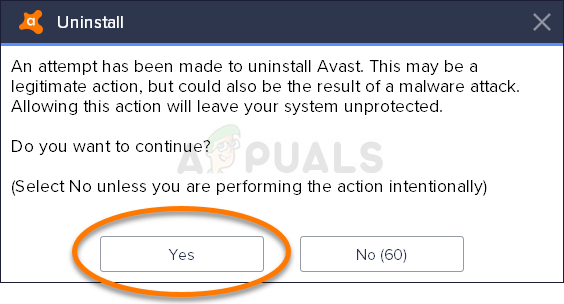
- Click Finish when the uninstaller completes the process and restart your computer to see whether errors will still appear. Make sure you choose a better antivirus option.
Solution 3: Run Additional Commands
This method is quite popular for its simplicity and plenty of people use it to fix most things related to the issue at hand. The funny thing is that it works and users have commented saying that this is the only step it took to resolve the problem. Try it out now!
- Search for “Command Prompt” by typing it either right in the Start menu or by pressing the search button right next to it. Right-click the first entry which will pop up as a search result and select the “Run as administrator” context menu entry.
- Additionally, you can also use the Windows Logo Key + R key combination to bring up the Run dialog box. Type in “cmd” in the dialog box which appears and use the Ctrl + Shift + Enter key combination for administrator Command Prompt.
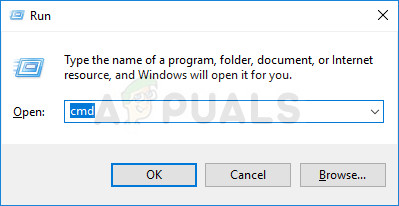
- Type in the following commands in the window and make sure you press Enter after typing each one. Wait for the “Operation completed successfully” message or something similar to know that the method worked.
ipconfig /flushdns ipconfig /release ipconfig /renew
- Try to run the “netsh int ip reset” command again and check to see if the error still appears!
Solution 4: Reset Winsock
Resetting Winsock is a helpful method you can use in Command Prompt to reset Winsock Catalog back to default setting or its clean state. You can try this method if you are experiencing the inability to run the “netsh int ip reset” command. Check it out below!
- Search for “Command Prompt” by typing it either right in the Start menu or by pressing the search button right next to it. Right-click the first entry which will pop up as a search result and select the “Run as administrator” context menu entry.
- Additionally, you can also use the Windows Logo Key + R key combination to bring up the Run dialog box. Type in “cmd” in the dialog box which appears and use the Ctrl + Shift + Enter key combination to run Command Prompt using administrator privileges.
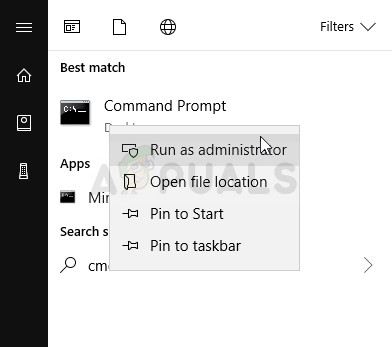
- Type in the following command in the window and make sure you press Enter after typing it. Wait for the “Winsock reset completed successfully” message or something similar to know that the method has worked and you haven’t made any mistakes while typing. Check to see if the issue persists.
netsh winsock reset catalog
